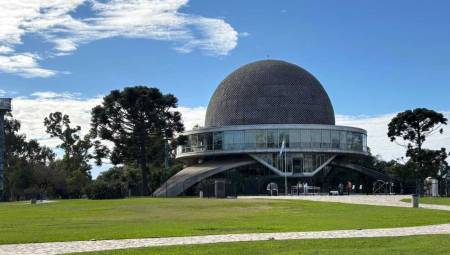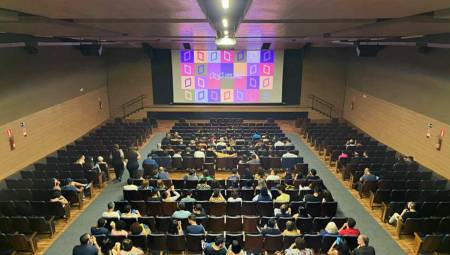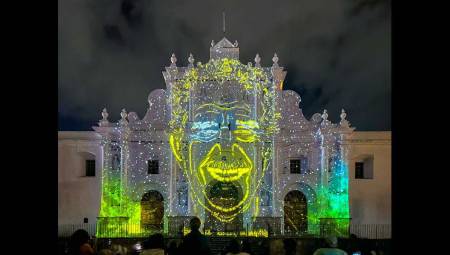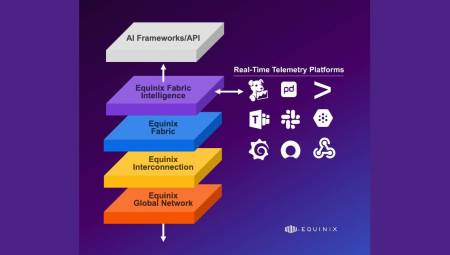 During January and May 2013, Loudness Projetos Especiais was in charge of designing and installing the new sound system of the National Stadium of Brasília.
During January and May 2013, Loudness Projetos Especiais was in charge of designing and installing the new sound system of the National Stadium of Brasília.
By Richard Santa S.
The sports venues that served as the venue for the World Cup that has just ended in Brazil, stood out, among other things, for the audiovisual solutions that were installed. The attendees of the matches were able to receive all the clear information that was transmitted during each meeting by the organizers.
In the particular case of the National Stadium, better known as Mané Garrincha, located in Brasilia, the integrator Loudness Projetos Especiais was in charge of providing the sound system from the design phase, executive project, equipment supply, installation, commissioning and operation during last year's Confederations Cup, and now for the World Cup matches.
Marcos Pilot, director of the integrator company, said that the design was developed to meet the performance requirements for FIFA sound systems. "Basically, it's a multi-zone speaker system, designed for audio delivery in all internal areas and stadium seating. We specify different types of speakers depending on the ambient area."
The sound system is basically designed to direct announcements and background music for all the different public areas of the stadium, such as the seats, corridors, bathrooms, entrances, and also to the private areas such as VIP lounges, boxes, security, administration and technical rooms. All of these areas are individually directed and controlled.
The system is also integrated with a large LED panel, which directs its audio content to the speakers and with the security system that allows the delivery of desktops to the public, pre-recorded (activated automatically) or live, in case of an emergency.
3D Modeling
To start with the designs, the integrator relied on several systems from the Bose company. They first used the stadium's architectural design archives to build a three-dimensional model. It was then exported to Modeler, the Bose Acoustic Simulation Software, to determine the best solution to cover audience areas.
Marcos Pilot adds that "for the seats, we specified Bose's new progressive directivity matrix speaker system, the RoomMatch System. It is a modular speaker system, which allows the designer to choose different coverage pattern modules, among the 42 available types, to build an installation capable of covering a certain area with uniform power."
After modeling, they decided that the best option was to install 16 series of eight RoomMatch speakers distributed below the roof of the stadium, for a total of 128 boxes that cover the seats of the stands. Part of the decision factor for these speaker systems is that they meet the LEED requirements formulated by the end customer, seeking to have a greener solution.
They also used the new Bose PowerMatch PM-8500N amplifiers that have integrated DSPs. They fixed eight amplifiers on the walkway just below the ceiling to power the RoomMatch speakers. For indoor areas, they used Harman JBL CSS 8018 ceiling speakers, XE65TB wall-mount speakers, and Proel PA HSPL30 cone speakers.
To group, process, distribute and control the amplifiers, Harman BSS's BLU-800 London processor was used. These processors were attached to each other, to the control room and the stadium security system, through a redundant HP network provided by Siemens. The protocol chosen to distribute the digital audio signal through the stadium was CobraNet.
"For this project, we have used many types of equipment to meet system requirements such as microphones as the main public source, audio servers for the playback of background music and to activate messages from evacuation systems, and routing sources that come from the video system," said Marcos Pilot.
All of these sources are controlled by the audio control room and integrate with the 13 processor/amplifier racks distributed throughout the stadium. There are also, ambient microphones such as sensors for automatic volume control.
With the assembly described above, the nearly 70,000 spectators, which is the capacity of the Brasilia stadium, enjoyed the best audio system in a completely new stadium, since the previous one was demolished to build a new one that met the requirements of FIFA.
A demanding customer
According to Marcos Pilot, FIFA has high standards for audiovisual solutions for the sports venues in which its most important championships will be played. Therefore, the main contractor of the work of the National Stadium, the Consórcio Brasilia 2014, appointed Loudness Projetos Especiais for the audio system, because a specialized consultancy was required.
The director of the integrating company indicated that the main contractor and the client have benefited in many ways from the execution of this project, such as: meeting FIFA's requirements completely, matching the highest degree to meet LEED requirements, following all occupational safety rules, resulting in no accidents for team members during installation and, above all, getting a quality sound system.
But despite the design and planning of the intervention, during the installation there were several inconveniences that had to be overcome quickly. The first and worst of all was a last-minute decision by the client who came up with a new roof design, which included a mesh fiberglass membrane stretched under the structure. The architect responsible for the project asked her to hide the speaker arrangement systems for aesthetic reasons.
"This membrane allows sound to pass through it, but it is not totally transparent, and since it is placed between the speakers and the audience, a certain attenuation of the sound was expected next. To determine the problem, it was decided to perform some tests with a sample of this membrane between a speaker and a microphone with the help of an FFT analyzer, trying to discover the interference that this material could cause for the performance of the sound system. After the trials, it was measured that the system would lose approximately 0.5 to 2.5 dB, depending on the frequency," explained Marcos Pilot.
In addition to this problem, originally the system had been designed to be hung nine meters below this membrane, so they had to redesign the system, installing the equipment farthest from the audience areas and attenuated by the membrane. "Fortunately, the simulations showed us that with the sound system rearranged, there was good performance. Our prediction turned out to be accurate after installation."
Another problem, presented during the installation, was that the contractor was behind the programming. At times they had to reassign the facility and move from one place to another to avoid delays. Also, they were given the rainy season, so it was a problem before the roof was installed.
Finally, Marcos Pilot concluded that "we are hearing a lot of good feedback from the main contractor team and the client, including people from the Brazilian government. In addition, the broadcasting teams that visited the stadium, such as HBS, Globo TV, and many others, also liked the sound system.









































































































